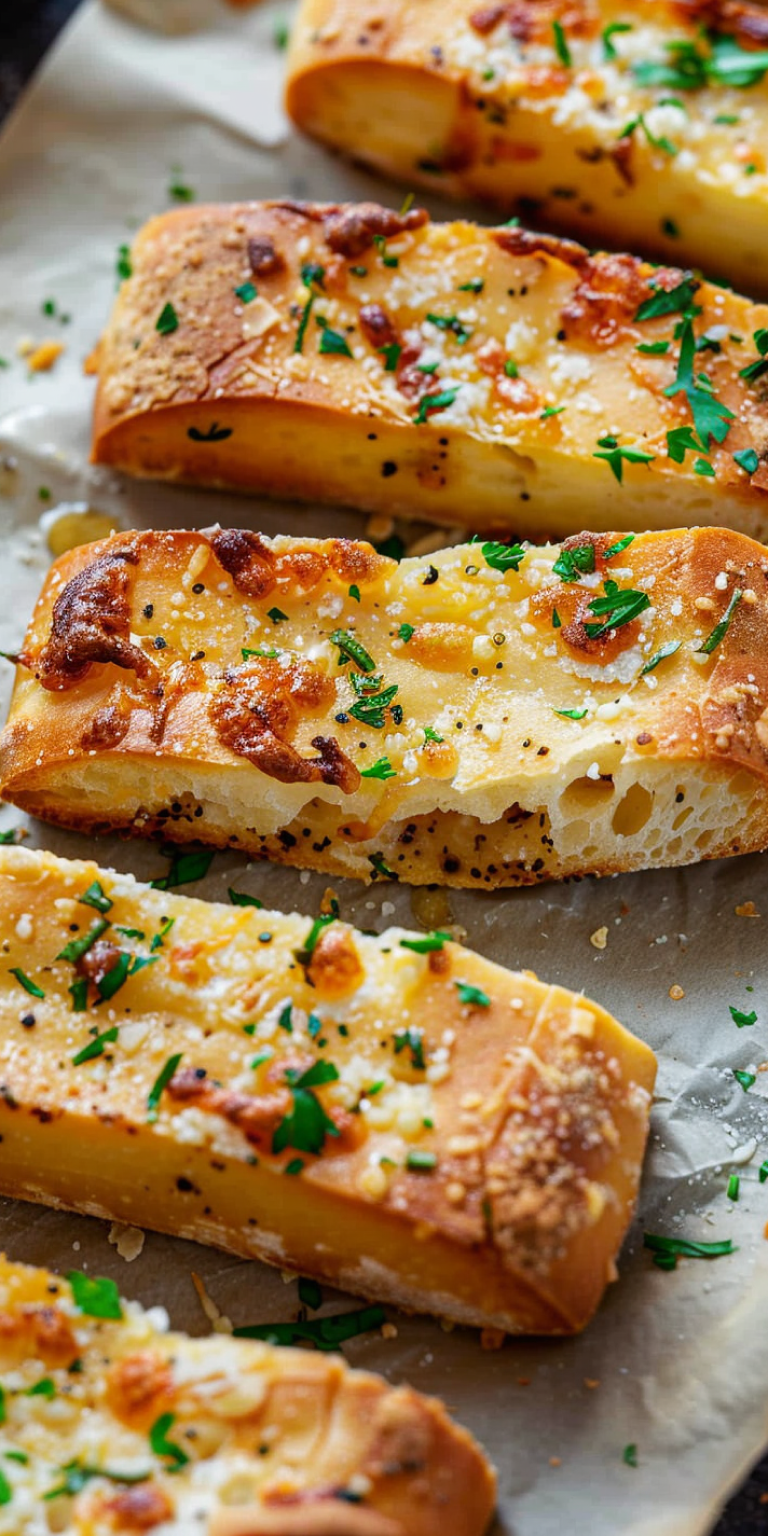Instructions
Preheat your oven to 375°F (190°C).
Prepare the garlic butter mixture: In a small bowl, combine the softened butter, minced garlic, dried basil, dried oregano, grated Parmesan cheese, salt, black pepper, and olive oil. Mix until all ingredients are well incorporated.
Spread the mixture: Spread the garlic butter mixture evenly over the cut sides of the baguette or French loaf.
Bake the bread: Place the bread on a baking sheet, butter side up. Bake in the preheated oven for about 10-12 minutes, or until the edges are golden and the bread is toasty.
Broil for extra crispiness: For an additional golden top, broil the bread for 1-2 minutes. Watch closely to avoid burning.
Cool and serve: Remove the bread from the oven, let it cool slightly for a few minutes, then cut into individual portions. Serve warm.
Notes
Even Spread: Use a spatula to spread the garlic butter mixture evenly across the bread. This ensures every bite has a balance of flavors.
Olive Oil for Shine: The addition of olive oil not only adds richness but also helps the bread achieve a nice shiny finish when broiled.
Adjusting Herbs: Feel free to tweak the amounts of dried basil and oregano according to your taste preferences for more or less herby flavor.
Enhancing Flavor: Add a pinch of red pepper flakes to the garlic butter for a slight kick.
For Softer Bread: Wrap the bread in foil before baking to keep it soft and moist.
Serving Suggestion: Slice the garlic bread before baking for easier serving and a more appealing presentation.
Recipe Variations
Vegan Version: Substitute the butter with a high-quality vegan margarine and use garlic powder instead of garlic for a completely plant-based version.
Cheesy Delight: Sprinkle grated Parmesan or mozzarella on top before baking for a cheesy garlic bread.
Gluten-Free: Use a gluten-free baguette or loaf to cater to those with gluten sensitivities.
What Type of Bread to Use?
French Bread: This classic choice is favored for its firm crust and soft, fluffy interior, which is ideal for soaking up garlic butter without becoming soggy. The firm crust crisps up beautifully in the oven, offering a satisfying crunch.
Ciabatta: With its rustic appearance and porous texture, ciabatta captures garlic butter in its airy holes, resulting in a flavorful, moist bite. Its robust crust also provides a delightful crunch, making it a great option for those who enjoy a textural contrast.
Baguette: Smaller and denser than French bread, a baguette offers a crisper exterior, which is perfect for those who prefer a crunchier garlic bread. Its compact crumb prevents excessive absorption of the butter, maintaining the bread’s structure.
Sourdough: Known for its tangy flavor, sourdough adds a complex taste to garlic bread. The sturdy texture holds up well against the richness of the butter and the intensity of the garlic, making for a hearty and satisfying slice.
Focaccia: If you prefer your garlic bread with more body and a herbal touch, focaccia is an excellent choice. Its thicker, softer texture and typically seasoned crust complement the simple garlic butter spread, adding depth to each bite.
Challah: For a sweeter twist, challah brings its slightly sweet profile and ultra-soft texture to the table. It pairs wonderfully with garlic butter, creating a unique blend of sweet and savory flavors.

